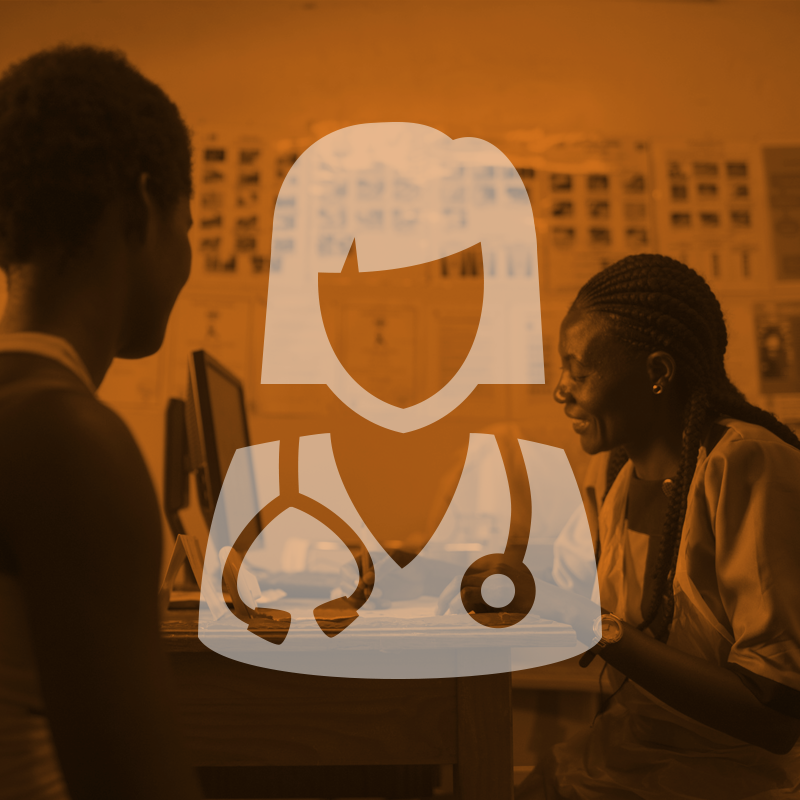Where We Work
See our interactive map


For ten years, IntraHealth International’s Strengthening National Capacity for Integrated HIV/AIDS Health Data Collection, Use, and Dissemination in Support of Evidence Based Response project in South Sudan has helped transform the Ministry of Health’s data, policies, surveillance, reporting, and strategic plans. The results: a better-equipped health workforce and stronger health systems for South Sudan.
IntraHealth has been working in South Sudan since 2006 and began to focus on strategic information in 2012 with the Strengthening Systems, Capacity & Data Collection with a Focus on Strategic Information in South Sudan project. Together, the two strategic information projects:
The teams achieved these results for the country’s health system in the wake of conflict, insecurity, climate disasters, and numerous disease outbreaks, including the global COVID-19 pandemic. Adding to these challenges were South Sudan’s health workforce shortage of trained, skilled health workers. So IntraHealth began working with the Ministry of Health to gather and review data to inform their decision-making using DHIS2, a web-based open-source platform for data management and analysis.
Now, health officials can access data in real time.
“Data about health services in South Sudan were being sent by email at the county and state levels and were then transmitted via Excel spreadsheet,” says Alfred Okiria, the project director. “Now, health officials can access data in real time using DHIS2, which allows them to capture more data in a streamlined way.”
Over a two-year period (2020 – 2022) overall reporting improved from 43% to 77%. Reporting at PEPFAR-supported sites was at 100% by 2022. As reporting increased, the project team (with Ministry of Health and PEPFAR staff) continuously monitored data quality and trained 78 focal persons to conduct surveillance at 78 project sites.
IntraHealth trained over 1,300 data clerks along with 268 monitoring and evaluation officers and 650 health workers in 80 counties. Additionally, 25 field officers were trained during an eight-week program and seconded to 86 facility sites where they mentored and trained 1,540 health workers and helped community volunteers track clients who had been lost to care and bring them back.
“We used the granular site management (GSM) system—an intensive onsite program data review—and quality-improvement approaches to improve health workers’ performance, grow the HIV program, and improve the quality of HIV services,” Okiria says. “The field officers worked with their teams at the facility level, collected data daily and submitted them on a weekly basis to our staff who generated the weekly dashboard, reviewed performances and discussed them at GSM meetings, and created improvement plans.”
When COVID-19 began to spread, IntraHealth supported the setup of the incident management system and designed and deployed a DHIS2 COVID-19 tracker and vaccination tracker to support the COVID-19 data management. The project designed a verifiable digital COVID-19 vaccination certificate that over 3,500 clients used for travel across borders.
Turnaround time for reviews dropped from three-to-six months to three weeks.
At the institutional level, the team also worked with the Ministry of Health to overhaul the research and ethics review board. They established a secretariat, supported the hiring of a research director, and created an income-generating model. Turnaround time for reviews dropped from three-to-six months to three weeks.
The project also established a new public health institute and completed its strategic plan and monitoring and evaluation framework.
“It’s a key pillar for disease outbreak prevention, detection, and response,” Okiria says. “This is a historic project for the country and it’s something we will be part of for many years. It will help shape the future of global health in South Sudan.”
In June 2022, the South Sudan Public Health Institute graduated 42 people from the institute’s data management and leadership, management, and governance programs. It also supported the training of 99 field epidemiologists on the Field Epidemiology Training Program and 20 health workers on the incident management system.
South Sudan’s health workers are now more equipped than ever to provide high-quality services for their communities. That includes a much stronger data-collection and reporting system, diverse capacity-building programs such as fellowships and field supervision, intensive engagement with communities to increase use of health services, and collaboration and investment in program integration at all levels of the health system.



